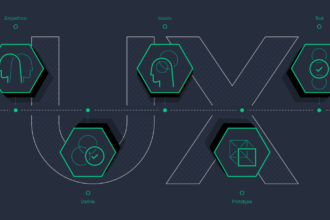The Growing Threat to Healthcare: How Cybersecurity Keeps Your Data Safe


Table of Contents
Key Takeaways
- Cyberattacks increasingly target the healthcare sector due to the sensitive nature of patient data.
- Robust cybersecurity measures, including encryption and intrusion prevention, are critical to safeguarding healthcare data.
- Selecting the best cybersecurity service provider is essential to maintaining a robust defense against online attacks.
- Healthcare providers must continuously educate their staff on cybersecurity best practices.
- Emerging technologies like AI and blockchain offer promising tools for enhancing cybersecurity in healthcare.
Introduction
As healthcare systems worldwide embrace digital transformation, protecting patient data has never been more critical. While the shift towards electronic health records and telemedicine provides numerous benefits, it also exposes healthcare organizations to cyber threats. Ensuring sensitive data availability, security, and integrity is crucial for regulatory compliance and patient trust. This article explores healthcare’s growing cyber threat landscape and the measures needed to protect this sensitive data.
Understanding the Cyber Threat Landscape in Healthcare
The healthcare sector faces unique challenges regarding cybersecurity due to the vast amounts of sensitive data it handles daily. Cybercriminals target this data for various reasons, including illegal resale and blackmail. In response, healthcare organizations must implement comprehensive cybersecurity strategies addressing their vulnerabilities. Attaining a healthcare cybersecurity certification is one proactive way for IT professionals to gain expertise in protecting healthcare data. Professionals holding these certificates are better prepared to foresee risks and implement the most effective defenses.
Strategies to Protect Healthcare Data
Encryption and Data Protection
One essential tactic for safeguarding medical data is data encryption. Converting readable data into an encrypted version limits access to authorized users with the correct decryption key. Encryption prevents unauthorized access and ensures that data remains unusable even if intercepted.
Intrusion Detection and Prevention Systems
Intrusion detection systems (IDS) and intrusion prevention systems (IPS) are crucial for detecting and lessening threats. IDS monitors network traffic and notifies administrators of any questionable activities. In contrast, IPS actively blocks threats, preventing them from breaching the system further. These systems form a resilient defense model, proactively safeguarding sensitive data.
Access Control Management
Implementing robust access control measures ensures that only authorized personnel access sensitive information. Role-based access control, which assigns access levels based on job responsibilities, is common in healthcare. Regular reviews and updates of users’ access permissions are necessary to adapt to changing roles and responsibilities and maintain optimal security levels.
Importance of Choosing the Right Cybersecurity Service Provider
Selecting an appropriate cybersecurity service provider is crucial in defending against cyber threats. A service provider with a proven track record in the healthcare industry can offer tailored solutions that address specific cybersecurity challenges. Factors such as the provider’s technology stack, response times, compliance measures, and ability to integrate with existing systems should be considered. Ideally, providers should offer scalable solutions capable of evolving with organizational needs.
Staff Training and Awareness
Every employee in a company is involved in cybersecurity; it is not just the job of IT departments. Frequent training sessions teach employees how to spot phishing attempts and the value of creating strong passwords, which contributes to developing an awareness-raising culture. Staff who understand the potential impact of a data breach are more likely to follow best practices, reducing the likelihood of incidents.
Innovative Technologies: AI and Blockchain
Blockchain and Artificial Intelligence (AI) are innovative technologies that promise to transform healthcare cybersecurity. AI can analyze patterns and predict potential threats through machine learning, offering an additional layer of proactive protection. Meanwhile, blockchain technology provides secure, decentralized solutions for managing patient records, ensuring accuracy, and decreasing the risk of unauthorized access.
Future Trends in Healthcare Cybersecurity
As cyber threats become increasingly sophisticated, the healthcare sector must continually adapt its cybersecurity measures. Future trends will likely focus on improving threat intelligence and fostering collaborative efforts across the healthcare industry to share insights and best practices. Adopting predictive analytics, where potential vulnerabilities are identified before they are exploited, represents a forward-thinking approach to cybersecurity.
Additionally, the emergence of quantum computing presents challenges and opportunities for healthcare cybersecurity. While quantum computing can enhance data processing capabilities, it poses new security risks requiring advanced encryption. Preparing for these developments now can offer healthcare organizations a competitive advantage in safeguarding patient data against future threats.
Conclusion
In an era of rapid digital transformation, healthcare organizations must prioritize cybersecurity to protect sensitive patient data. Resilience against cyber attacks requires extensive security measures like encryption, intrusion detection, access control, and ongoing employee training. Additionally, a business’s security posture can be significantly impacted by its choice of cybersecurity service provider. Maintaining data integrity and patient trust will depend on remaining knowledgeable and flexible as new risks and technologies appear.
A strong corporate culture and technical innovation are essential for the future of healthcare cybersecurity. Healthcare providers may safeguard their digital assets and provide a safe environment for delivering outstanding patient care by making proactive investments now.






